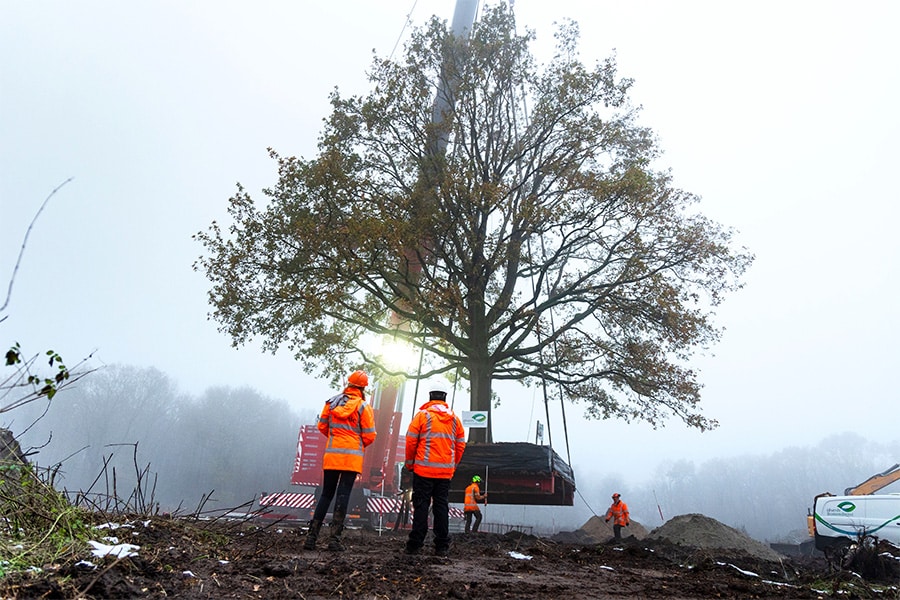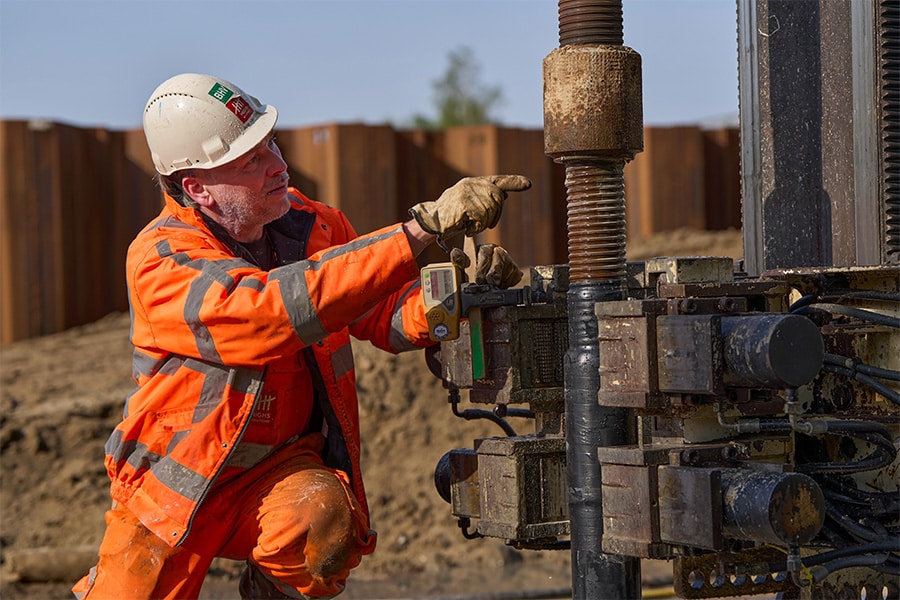
Grout anchors completely recovered from soil
In construction pits, anchor structures are frequently used in the form of grout anchors that are usually considered lost after completion of the pit and are left behind in the soil. A shame, according to Peter Bongers, operational director of High 5 Solutions, who has developed a method to completely reclaim the anchors from the soil in order to reuse them later in a subsequent project.
A building pit is formed by sheet pile walls and a purlin structure to which anchors are attached. "These anchors are inserted into the soil under a slope. After the grout body hardens, the anchor is tested and tensioned so that the excavation of the building pit can take place," Peter explains. "Once the basement is realized and the space between the sheet piling and basement is filled, the anchors are relaxed and no longer have a function."

No more value
In the past, the grout anchors could not be removed and remained as lost in the ground. "Only in special cases, where the anchor rod is detonated with an explosive, can the free anchor length above the grout body be removed by means of a hydraulic jack," Peter continued. "The disadvantage of this method of removal is that the portion of the anchor rod that is in the grout body is not removed. The grout body remains intact and the steel that is jacked out of the soil no longer has any value because of the relatively short pieces that are recovered."
Sonic vibrations
It can be done differently. High 5 Solutions has in fact developed another, much more sustainable method for the complete recovery of grout anchors. Peter: "After the anchors lose their function, they are relaxed. This is done in various ways, either using a hydraulic jack, burning the head plate loose or some other way. Then we connect the sonic drill to the anchor, the same machine used to apply the anchors, and vibrations of about 150Hz (9,000 rpm) are introduced into the anchor. This ultra high-frequency vibration puts the anchor tube into resonance so that the anchor tube detaches from the grout body formed in the ground. The anchor tube is then pulled out of the ground rotating and under sonic vibration."

Cleaver
As the anchor is removed rotating and under sonic vibration and the drill head rises with it, it passes through the grout body like a splitting axe, so to speak, Peter outlines the methodology. "This pulverizes the entire grout body and only the crushed grout remains. Unique to our methodology is that the anchor pipe is removed completely including the drill head. The emerged anchors can be reused again because the method of removal allows them to be disconnected in long segments, making them suitable for use again in a subsequent project. Because both the rod and the grout body have been removed, there is no longer any structural cohesion and no hindrance will be experienced later when, for example, new piles or sheet piles are installed. This is a great advantage when piling work is planned later on the job, but also an important advantage for permit issuers, because the entire structure is now temporary."
Because the grout is left pulverized, only a volume loss equal to the volume of the anchor tube and the drill head remains, Peter resumes. "This volume in itself is negligible and will not lead to settlements, because the previous jacking effect of the anchor and the arching effect around the prop will compensate for it. Incidentally, if necessary, this released space can be filled with a filler by removing the anchor tube and drill head during, or immediately after, the pulling process. The filling of any resulting hollow space also has a water-inhibiting effect so that the punctured water-inhibiting layers are restored. All in all, then, an extremely sustainable methodology."



